
I was bartending last night when the clock struck midnight, the date changed, and it became my birthday. Landmarks such as this offer good times to reflect, and as I woke up late to my first birthday in a van, I began thinking of all the places I’ve lived in 32 years. Eight have passed since I moved to the Pacific Northwest; a quarter of my life, but I still discover new places all the time.
One more year under my belt, I turned the key and piloted my van north for my first trip to the Olympic Peninsula to celebrate a yearly milestone.
I wanted to experience the entire coastline of Washington State, so I set out west to the beaches of Oregon to cross the Columbia from Astoria. It was a snowy drive, especially crossing over the coast range, and the albescent road was mostly vacant save the occasional ponderous logging truck.
After crossing the longest continuous truss bridge in North America, I hit the southern periphery of Washington state, where I was greeted by signs for places like Dismal Nitch and Cape Disappointment.
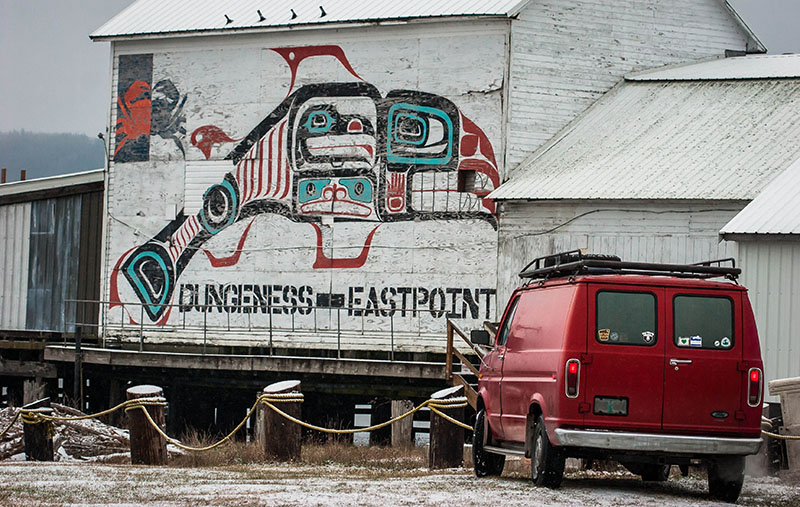
I made my first stop in the town of South Bend, the self-proclaimed Oyster Capital of the World, where oysters are harvested daily and served fresh from the bay at a handful of waterfront shacks.
I chose Chester’s and enjoyed one basket of deliciously meaty fresh-shucked raw oysters and another of the house specialty, a cornmeal-fried variant, lovingly prepared and served by the proprietor, a motherly type who was concerned about the safety of pushing north on the wintery roads.
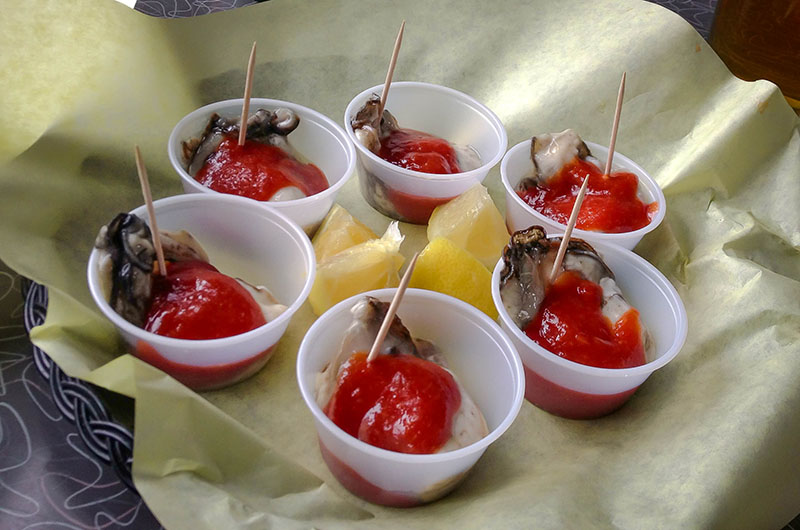
From South Bend, I continued up the 101 through Aberdeen, where a sign invites visitors of Kurt Cobain’s childhood hometown to “Come As You Are.” It wouldn’t be much longer before I approached the southern border of Olympic National Park at Lake Quinault, where I’d spend the next two nights on the bank of the north shore.
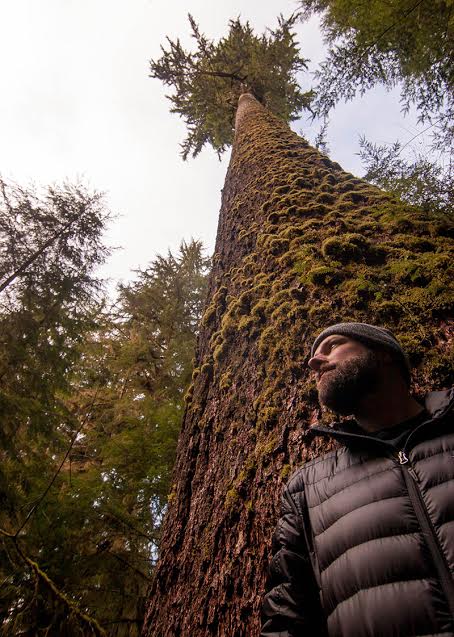
The Quinault Rainforest is home to more record-size trees than any other single forest in the world, earning it the nickname “the valley of the giants.” So after pausing to observe a romp of otters hunting fish under the diffused light of a foggy dawn, I set off to see these behemoths for myself.

In just a couple hours time and a few miles hiked, I had seen the largest red cedar and sitka spruce in the world, and I walked through a stand of douglas firs that contained five of the ten largest examples on the planet, including the tallest, which climbed more than 300 feet skyward.
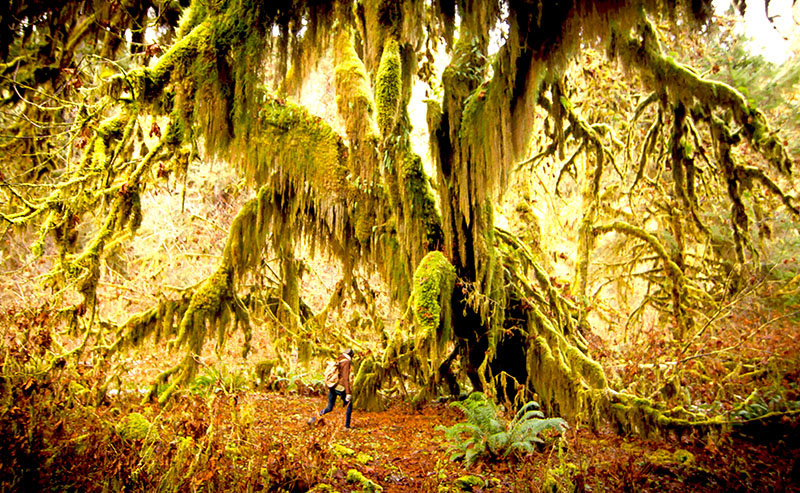
From Lake Quinault, it was back out to the coast and north on my way to the Hoh Rainforest. I arrived in the early afternoon after being twice distracted from my progress by signs promoting other giant roadside conifers.
Due to federal budget struggles, the National Park Service mothballed the Hoh Rainforest visitor center for the winter, and visitors took over the job of sharing park conditions with one another by posting handwritten notes on the bulletin board out front, mostly warning of encounters with aggressive elk.
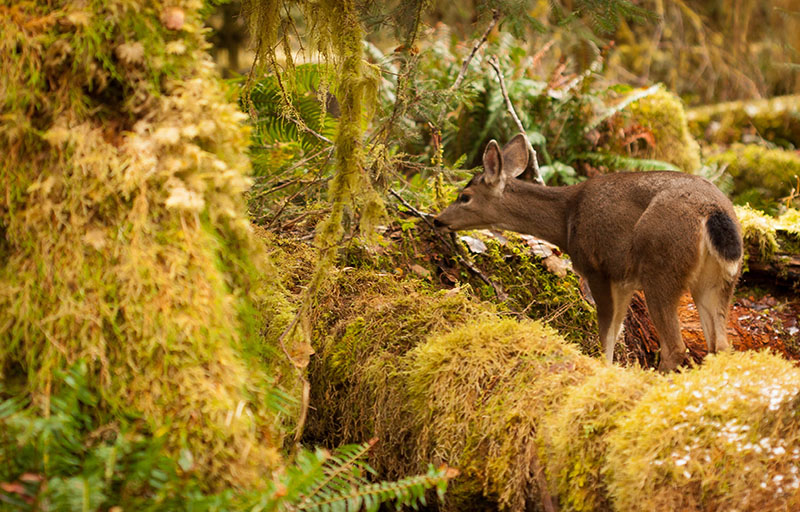
I did two short loop hikes from the visitor area and passed the beginning of the 17.5 mile Hoh River Trail, leading to blue glacier and the standard climbing route up Mount Olympus, which planted the seed for a future expedition.
More ancient wooden giants towered all around with thick mats of chartreuse moss draped over their massive extremities, and blacktail deer foraged nonchalantly just a few yards from the trail. I saw plenty of fresh elk sign, but returned to the van without encountering any ornery ungulates.

Continuing on from the Hoh Rainforest, I passed through the town of Forks, a several mile long advertisement for the Twilight films straddling the 101, where I encountered the only herd of elk on the trip, grazing alongside a racetrack. They were well-mannered, if not shy.
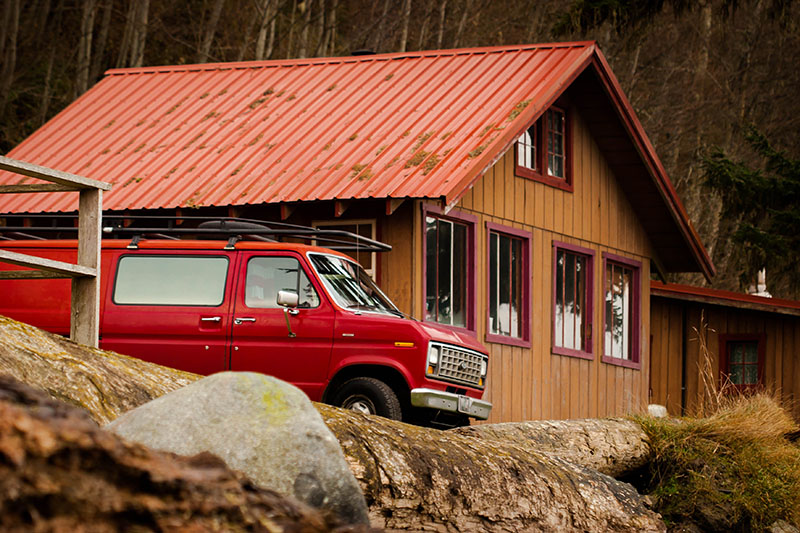
I spent the night in a primitive cabin on the beach of the Straight of Juan de Fuca, where I had my first woodstove-heated shower and experienced a variety of feelings including “excitement”, “scalding”, and finally, “goosebumps”.
After putting out the kerosene lamps, I fell asleep to the clinking sound of the tide pushing and pulling through the polished round stones of the beach like a hand sifting through a box of marbles.






